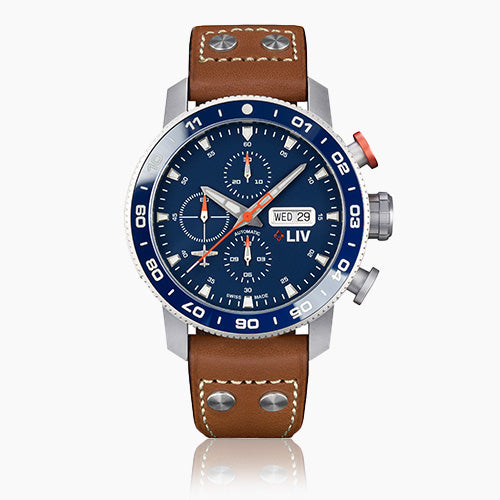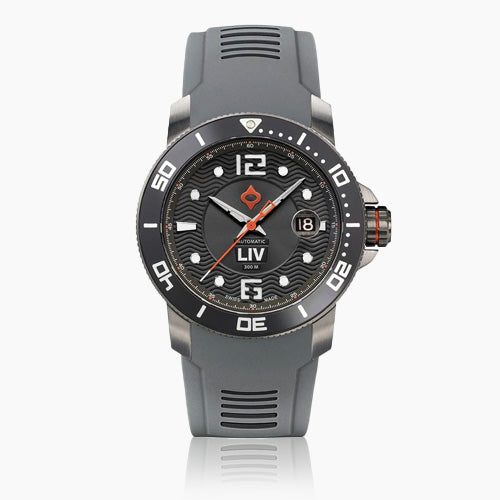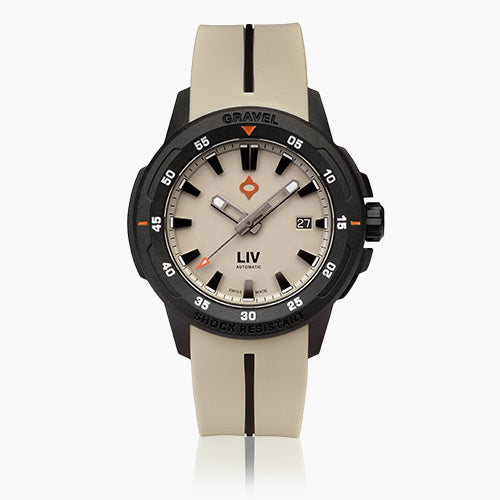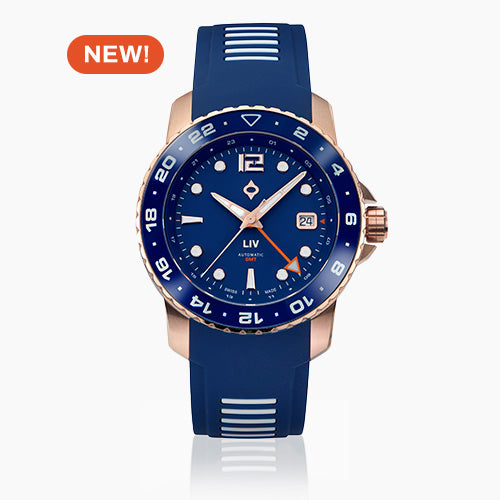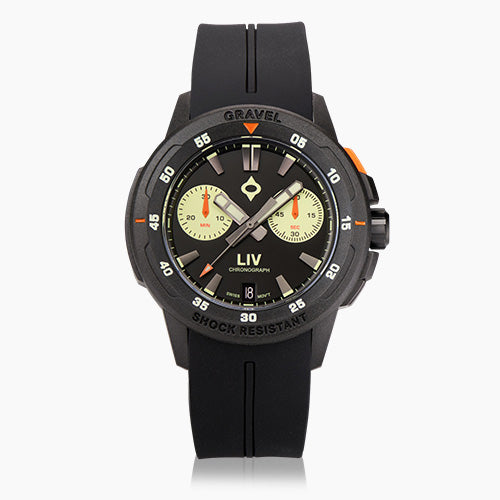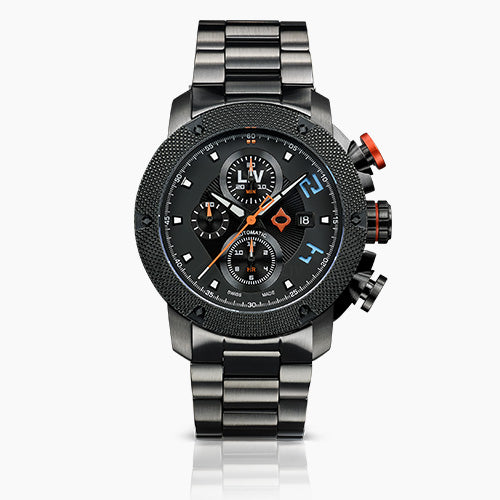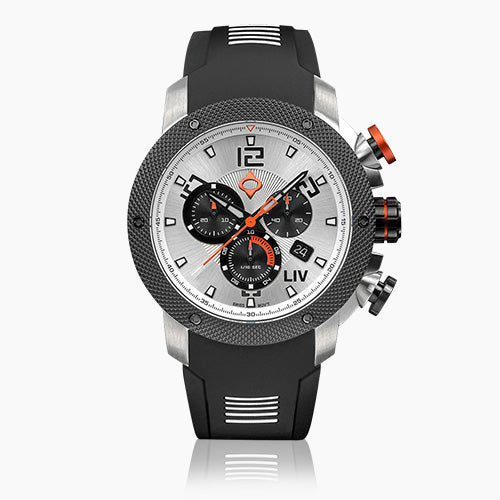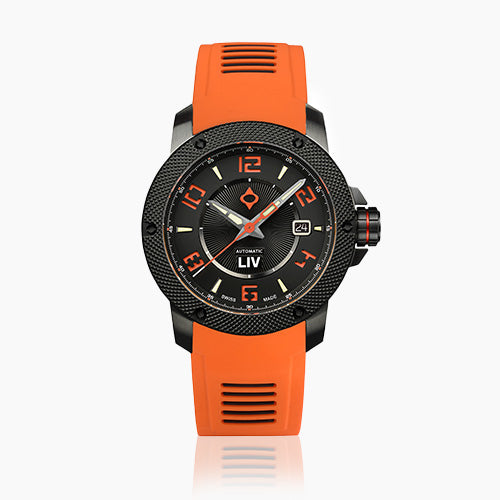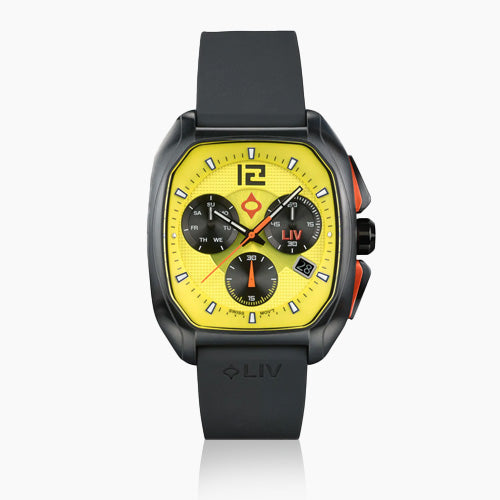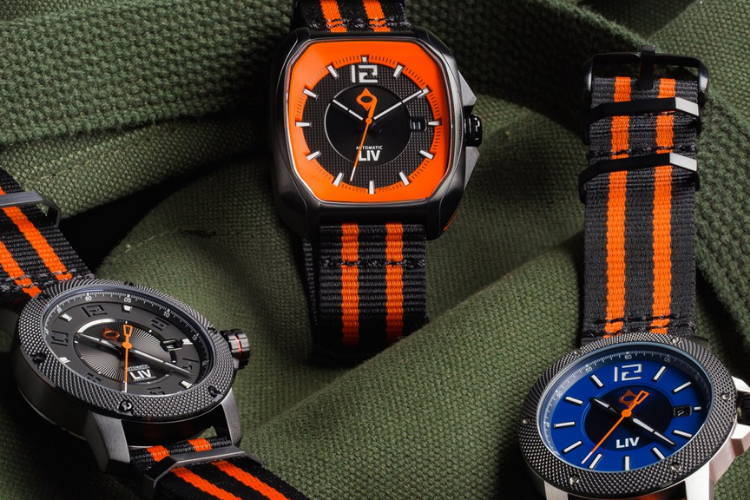
Watch Collecting: The Basics
Share
THERE ARE FOUR TYPES OF PEOPLE OUT THERE WHEN IT COMES TO WATCHES.
- People who have just one
- People who don’t have any (how sad is this?)
- People with a couple
- Watch freaks
If you are reading this, chances are you are on the verge of becoming a watch freak. Congratulations on making a timely move into the world of horology. Yes, it was an awful pun, but how can a writer resist?
This article is designed to help you plan your collection and set out to fulfill your watch dreams. Is a plan necessary? Of course not. However, I wish that I had taken a little bit of time to plot my course. So, read on.
MECHANICAL OR QUARTZ MOVEMENTS?
There are two primary watch movements if you do not include smartwatches. This latter category is an electronic device rather than an actual timepiece, at least in my opinion. I suspect this statement may raise an eyebrow or two among smartwatch owners.
The two types of watches you can buy are powered by either a mechanical or quartz movement. Here’s a brief overview of the two movements.
MECHANICAL MOVEMENTS
The true expression of watchmaking—mechanical movements. Micro-engineered marvels, they rely on carefully crafted mechanical components and a mainspring to power the timekeeping functions.
Within mechanical movements, you can buy a manually wound watch or an automatic. Depending upon your age, your first watch may have been manually, or hand-wound. Being born in the second half of the last century, my first watch used one of these movements. Hand-wound timepieces are not as common today as the automatic movement has come into its own.
An automatic movement is self-winding. How does it accomplish this? Inside the watch, there is a rotor that spins as you move about. This spinning rotor winds the mainspring and keeps your watch ticking. It is very convenient and has the benefit of never needing a battery. If you keep it wound, it will never stop. Of course, both these points are valid for hand-wound watches too.
QUARTZ MOVEMENTS

There are two primary watch movements if you do not include smartwatches. This latter category is an electronic device rather than an actual timepiece, at least in my opinion. I suspect this statement may raise an eyebrow or two among smartwatch owners.
The two types of watches you can buy are powered by either a mechanical or quartz movement. Here’s a brief overview of the two movements.
SO, THE QUESTION IS, WHICH SHOULD YOU HAVE IN YOUR COLLECTION?
Drum roll, please! Both, of course. Mechanicals are the favorites of purists (and your author). Still, quartz watches can deliver incredible complications that mechanical watches struggle to provide—more on complications in part 2.
GRAIL TIMEPIECE(S)
Perhaps you have heard the description “grail” timepiece. If you haven’t, here’s what this means, you select one or more watches that you want to have as centerpieces of your collection. Typically, such watches are more expensive and require saving to buy them.
People pick their grail watch on many factors, some listed below. What you choose for your grail timepiece is totally up to you, one of the beauties of the watch collecting affliction, er, hobby. My wife suggests I have more than an affliction, but then what about all those shoes she has?

Here are some examples of grail watches, some more expensive than others:
One with a Valjoux 7550 movement (my first grail watch - I have it, after waiting 10+ years)
One with a Valjoux 7552 movement (the master calendar version of the 7550)
Master calendar movement (the Valjoux 7552 comes close to this)
A tourbillon movement (arguably the most complicated mechanical movement)
A diamond pave dial
A watch with a meteorite dial
A watch from a specific manufacturer
A gold or other precious metal case
Does your grail watch need to be expensive? Not really. It may be a specific combination of complications, features, or case materials. For example, bronze cases are uncommon but are becoming more popular. I’ve added that to my grail list.
Pick your grail watch and go get it. Then pick another. Repeat as necessary.
WATCHES EVERY COLLECTOR SHOULD OWN
Watch collecting is a personal pursuit, and the fundamental rule is, “Buy timepieces you like.” Seriously, don’t be pressured into buying a watch because a celebrity or acquaintance says you must. If you like the watch, that’s a different story, but be sure to buy what you want. Now, it is the opinion of the author that you should have specific “foundation” watches in your collection. This opinion and a few bucks will get you coffee at the contactless coffee shop (2020 coronavirus pandemic reference for readers from the future).
TWO- OR THREE-HAND WATCH. Only a sundial is more fundamental than this style, and sundials are hard to wear. Seriously, the gnomon is always snagging in your clothing. These are watches suitable for any occasion and can either be quite elegant or down and dirty.
Dive watch. The truth be told, very few people who own a dive watch ever use it for diving. What? You mean folks buy something rated to 300 m depths and do not routinely dive that deep? Yep, that’s the situation. However, dive watches are classic. They are rugged, iconic in appearance, and exude a cool factor. The most common models have three-hands, a screw-down crown, a date complication with a magnifier, and a uni-directional rotating bezel. A uni-what? These watches have a bezel as part of the case. It is marked with units of time divers can use to track how long they have been at depth. If the bezel could turn both directions, it could accidentally go backward, posing a risk to the diver’s health.


The pilots watch can be characterized by larger numerals, black or dark dials, and lots of lume. Lume is the material applied to the numbers and hands of watches. After exposure to light, it glows in the dark—just the thing for night flying operations. The straps are also distinctive, featuring rivets or a NATO-style.

P-51 TITANIUM CHRONO BLACK / GRAY
Non-round watches. Let’s face it; most watches are round. Now, that’s not a bad thing. Some of my favorites are round. But, it’s nice to change up your look with different case shapes. Square, rectangular, pillow/tonneau (soft rectangles), and multi-sided cases are available. If you see one that strikes your fancy, add it to your watch stable.

BIG WATCH COMPANY OR SMALL?
There is something of a revolution going on in the watch world, boutique (small) watch companies are entering the market and selling direct to consumers. A lot of things are behind this movement (yes, it could be another pun). The ability to provide quality at affordable prices via the convenience of online shopping are key drivers powering this trend.
Here’s the typical distribution model for big-name brands. Build the watch and sell it to a distributor who sells to a wholesaler who sells to a retailer. Every stop between the factory and the retailer means additional markups. More markups equal higher prices.
The small companies can sell direct, eliminating every intermediate step in the channel described above. These companies can provide watches of equal and better quality for a lot less. Also, their designs are often much more exciting, and limited editions are the rule rather than the exception. It is worth exploring this new breed of company.

DISPLAY AND STORAGE OF YOUR COLLECTION
When you have one or two watches, there isn’t much of a challenge of storing them when they are off the wrist. Generally, people just take them off before bed and put them on a nightstand or dresser.
However, when the horological bug bites, things change in a hurry! Maintaining control over a growing watch collection can be like herding cats; they seem to squeeze past all your corralling efforts. Before you know it, they end up on every empty surface or drawer in your bedroom, kitchen, living room, bathroom, or den.
The most obvious way to store your watches is in the packaging the manufacturer created for shipping. These can be works of art in their own right. Unfortunately, they take up a lot of room. Also, the cases are rarely the same size and shape. Last but not least, getting the watches in and out of their boxes takes time, especially if you have a stack more than one layer deep. Unless you like the building-block look, storing in the packaging is not sustainable.
Of course, such problems have generated a solution, watch cases. These are like jewelry boxes for your watch collection. If there are nearly infinite varieties of watches, display cases are right behind in terms of options.
Watch cases can be beautiful examples of cabinetry and cost thousands of dollars. They can be utilitarian, made from rugged materials like aluminum or synthetic materials. And, they can hold two or more watches. There is a practical limit on the number of watches per case. After a certain point, the case becomes a load-bearing wall.
HERE’S WHAT TO LOOK FOR IN YOUR WATCH CASE:
Here’s what to look for in your watch case:

- A top with a window so you can see your watches. I mean, what’s the point of the case if you can’t see your treasures? Might as well put them in your sock drawer.
- At least 12 slots for your watches. I like the 24-watch version. These cases have a drawer for 12 watches with 12 under the glass.
- Nicely crafted pillows. Yes, the cushions that hold the watch in the slot is called a pillow. The best versions use suede or suede-like fabric to cushion your watches and protect from scratches and wear and tear.
- Slots wide enough to accommodate 52 mm or larger diameter watches. Big watches are in and need larger slots in the watch box. Trying to cram a 52 mm behemoth in a 44 mm slot is not going to work. If you have to use the shoehorn to get the watch in the case, the slot is too small.
- Some cases come with locks. Consider this option if you fear a family member will pillage your collection. They already do it to your tools, right? Protect your watches so they’ll be there when you want to wear them.
KEEP THE PACKAGING
Watch companies are justifiably proud of their watches. They also go to great lengths to provide grand packaging. The perpetual debate in any collecting field is, “Do you keep the packaging or discard it?” Trust me on this one, keep the packaging and all the paperwork that accompanies your watch—the manual, warranty card, etc.
If you sell a watch to another collector, having the packaging and documentation is crucial. Sure, people will buy it without all this, but they’ll pay you less. I have a footlocker where I keep my packaging. Okay, two footlockers, four moving boxes, and a couple of loose ones on my top closet shelf. Yes, they take up space, but it’s worth the sacrifice.
Friendly tip, never send your watch to the manufacturer in the original packaging. If, for some reason, you need to return your watch for service, repair, battery replacement, and so forth, do not send it in the original packaging. You’ll never see it again. The watch companies do not have the room or processes to keep your watch and packaging together.
WHAT NOW?
This is Part 1 of watch collecting basics. Part 2 is coming soon. In the meantime, create your watch purchase master plan, set your sights on a grail watch and get started. Time’s a-wasting! Yes, more puns.
